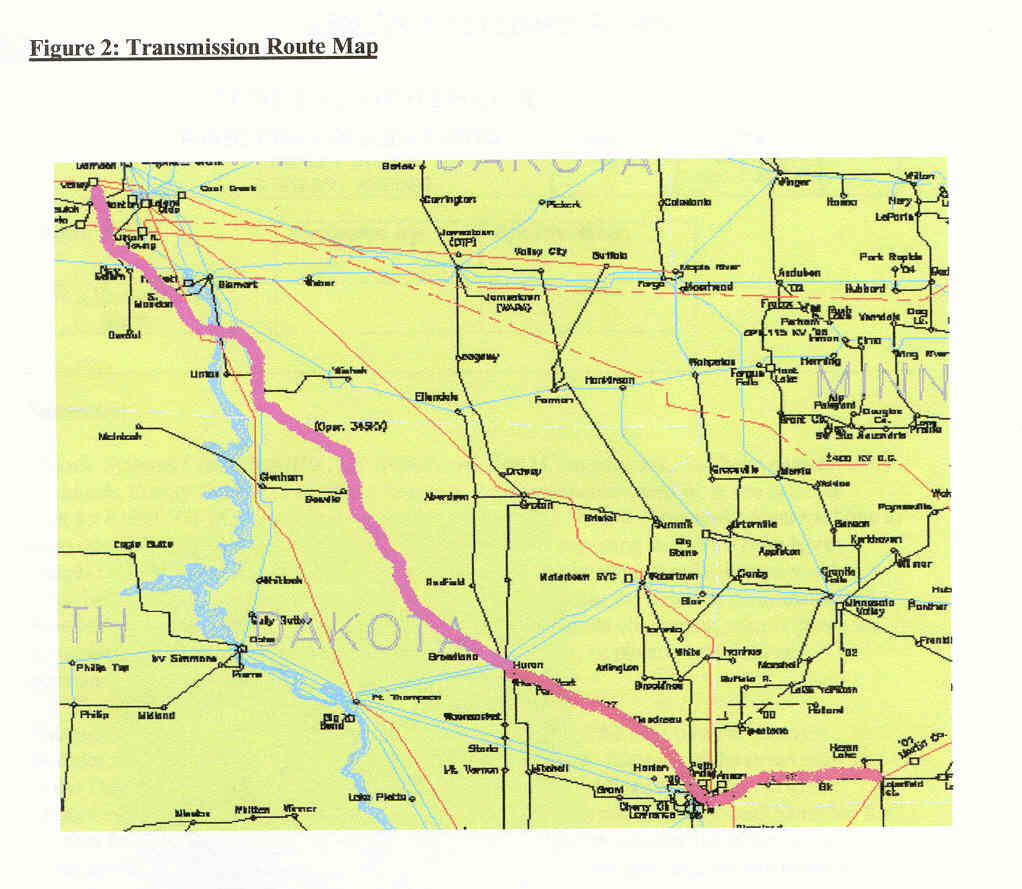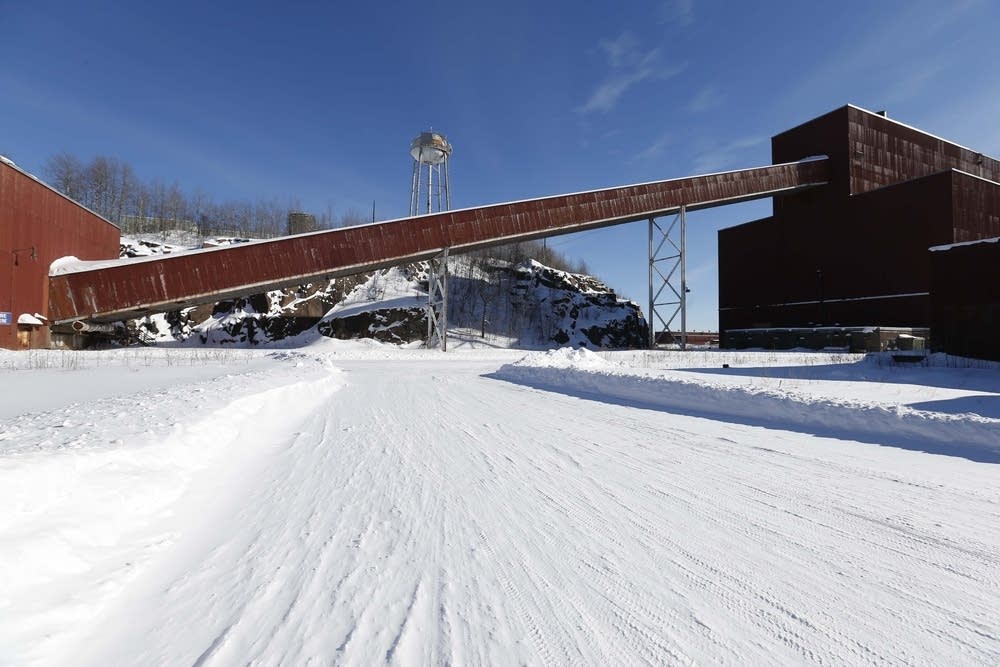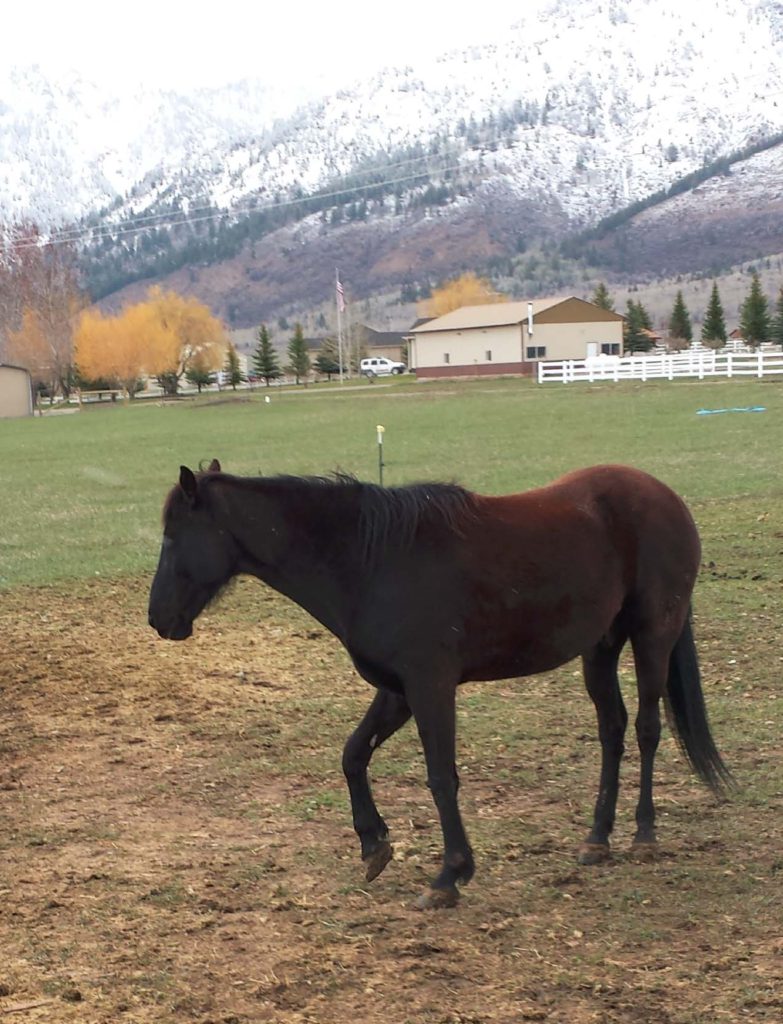Tamarack copper-nickel exploration?
November 13th, 2019

Talon Nickel USA has filed with the DNR to rebore/reuse existing exploratory borings, from 2015, near Tamarack, MN.
But it looks like they’re hanging their hat, and a lot more, on this project. A recent press release:
And an even more recent press release, within the last week:
Talon Metals – Advancing the Tamarack Project: Upcoming Work Program and Initiative to Evaluate Producing Nickel Sulphates for the Battery Market
Here’s a presentation touting this project:
“Securing 21 [st] Century U.S. Supply Chains for EVs and Energy Storage”
A friend lives nearby, we were closer than I thought, and this is on a County Road just north of the planned mine:

It’s all about coal… as if there was any doubt!
July 24th, 2018

That’s the Coal Creek coal plant in North Dakota. Back in late August 2006, I got on the bus and went on the tour of the coal plant and the Falkirk coal mine. Well worth it! Anyway, google alerts caught this article recently:
North Dakota coal plant to upgrade transmission system that carries power to 500,000 people
UNDERWOOD, N.D. — Greg Schutte compares Great River Energy’s current transmission system to an 8-track tape and the improvements being made as upgrading to the latest iPhone.
The CU HVDC line, which stands for high voltage direct current, was put in service 40 years ago in 1978.
It’s an extremely important line to GRE because it moves 73 percent of the cooperative’s power supply 436 miles from Underwood to Buffalo, Minn., west of the Twin Cities, and serves about 500,000 customers across Minnesota and parts of Wisconsin.
The power cooperative is preparing to invest $130 million in the line, which Schutte said is imperative to continue producing power at the state’s largest coal-fired power plant, Coal Creek Station.
“It’s an investment in the station and an investment in Coal Creek Energy Park,” Schutte said.
“We had inklings the stations were getting too old,” Schutte said, so GRE performed a life assessment on the system. “We found out we had some issues.”
The main concern is with the thousands of valves located within the conversion equipment, all of which are oil lubricated. The newer technology changes that, making the valves fireproof and reducing risk of failure.
So in 2015, GRE awarded a contract to ABB, a Swedish company, to replace the system.
Starting in March [2019], the power plant and transmission system will go through a 74-day outage, running at half power for all but three days of total shut down. In that time, ABB will gut and reconstruct the two 65-foot stacks that convert the power for transport across the line.
“We’re basically just keeping a shell,” Schutte said. “That’s a huge outage for us.”
GRE began the process seven or eight years ago and, in the past couple years, has devoted more than 20,000 internal engineering hours to making the conversion run smoothly.
A 350-by-100-foot building is being constructed on site to serve as a staging area as the equipment is shipped from overseas. The contractors will pre-assemble as much as possible.
“They want to be really focused once the outage starts,” GRE spokesman Lyndon Anderson said of crews that will be running 24/7.
More than 100 union contractors will be on site.
“It’s the biggest project on our books,” Anderson said.
Along with the valves, the computers that control the system, “the brains of it,” are being replaced, according to Schutte.
The components that make up the system will be reduced by 70 percent, which means less moving parts to maintain.
The system also will see a 7-megawatt efficiency gain because it will be water cooled rather than air cooled. Currently, GRE has to power 1,000-horsepower worth of fans that force air through the system. With the updates, they can sell that power rather than using it.
“That’s nothing to shake your head at either,” Schutte said.
Once the project is complete, the staging building will become a shop for the line and substation maintenance crew. ABB will stay on site for a 90-day trial operation after the outage.
Schutte said there are only five transmission lines in the United States like the CU HVDC line and it’s one of the oldest. The only remaining one that will need updating is Minnesota Power’s Square Butte, HVDC line, which also runs through North Dakota between the Minnkota Power Cooperative’s Milton R. Young Station and Duluth, Minn. Schutte predicts that line is about four years behind GRE’s for updates.
GRE’s line has been extremely reliable, running nearly 100 percent of the time, according to Schutte. Without the updates, it was predicted that reliability would drop off next year and the cooperative wanted to be ready for it.
The last major development by GRE was the building of the Spiritwood Station, which had a $437 million price tag. The cooperative’s DryFining technology installed at Coal Creek cost about $285 million.
Other area transmission projects have involved new construction. Basin Electric Power Cooperative recently finished a 345-kilovolt line from Beulah to Grassy Butte and Tioga at a cost of $300 million, according to Basin spokesman Curt Pearson.
Mark Hanson, a spokesman for Montana-Dakota Utilities, said MDU is splitting the cost of a $240 million to $300 million 345-kilovolt line between Ellendale and Big Stone City, S.D., with Otter Tail Power Cooperative.
Note that the little 200MW Stanton coal plant is closing right now:
Life cycle of lignite plant powers down
ABB, as above, got the Coal Creek job — here’s some of their PR:
CU HVDC Project – Stability over long distances and low environmental impact
ABB wins $130 million order to upgrade HVDC power transmission link in the US
There’s been a lot of new transmission built in the Dakotas, and now they’re going to rehab the CU line?
Remember ABB? They’re the ones who did the study way back when to figure out how best to get new coal generation out of the Dakotas:

And GRE’s coal drying operation, here’s an article I found while looking for details on the Coal Creek rehab:
Lignite and sub-bituminous coals from western U.S. contain high amounts of moisture (sub-bituminous: 15 to 30%, lignites: 25 to 40%). German and Australian lignites (brown coals) have even higher moisture content, 50 and 60%, respectively. The high moisture content causes a reduction in plant performance and higher emissions, compared to the bituminous (hard) coals. Despite their high-moisture content, lignite and sub-bituminous coals from the Western U.S. and worldwide are attractive due to their abundance, low cost, low NOx and SOx emissions, and high reactivity. A novel low-temperature coal drying process employing a fluidized bed dryer and waste heat was developed in the U.S. by a team led by Great River Energy (GRE). Demonstration of the technology was conducted with the U.S. Department of Energy and GRE funding at Coal Creek Station Unit 1. Following the successful demonstration, the low-temperature coal drying technology was commercialized by GRE under the trade name DryFining TM fuel enhancement process and implemented at both units at Coal Creek Station. The coal drying system at Coal Creek has been in a continuous commercial operation since December 2009. By implementing DryFining at Coal Creek, GRE avoided $366 million in capital expenditures, which would otherwise be needed to comply with emission regulations. Four years of operating experience are described in this paper.
(PDF) Four Years of Operating Experience with…. Available from: https://www.researchgate.net/publication/282203428_Four_Years_of_Operating_Experience_with_DryFiningTM_Fuel_Enhancement_Process_at_Coal_Creek_Generating_Station [accessed Jul 23 2018].
PolyMet Draft Permit issued — WHERE IS IT?
January 6th, 2018

PolyMet’s Draft Site Permit has been released by the Dept. of Natural Resources. Here’s the link:
And in there are some links — official word from Barb Naramore, DNR, is that the Permit to Mine Application & Appendices and DNR’s Draft Special Conditions constitute the “Draft Site Permit” for the PolyMet mine, based on this statement:
Following review of PolyMet’s permit to mine application, DNR has prepared draft special conditions for the application. Together, the application and the draft special conditions are considered the draft permit to mine for the NorthMet project.
Guess that’s what they’re presenting as the “Draft Site Permit” for review and comment, but it looks pretty bizarre to me!
Here is that application and special conditions:
- Permit to Mine Application and Appendices (755 MB)
(12/13/2017)- Appendix 16 provided separately – Final Environmental Impact Statement and Related Environmental Reports(1.3 GB)
(12/13/2017)- Appendix 18.1 Wetland Replacement Plan Attachment D-1 (1 MB)
(01/05/2018)- DNR’s Draft Special Conditions (2 MB)
Why did I ask about this? You’ll note above, there is the DNR’s Draft Special Conditions, but tell me, do you see a Draft Site Permit anywhere? I’d spent a lot of time looking, and cannot find anything that resembles a “Draft Site Permit.” So I asked around. Oh, but wait, there’s no project contact info on any of the DNR’s pages or press release. WHAT? No problem, I have contact info for the chief grand poohbahs at the DNR, and that worked.
To Comment:
DNR’s PolyMet’s Permitting COMMENT Page (note you are asked to accept set up to Comment online
In the news:
4 things to know about the PolyMet mine — MPR
With Minnesota mining permit, PolyMet proposal reaches a turning point – STrib
Comments will be accepted through March 6, 2018. Two public meetings (not hearings?) will be held. Petitions for a Contested Case may NOT be filed using the online commenting form, so they say at the link above!
Comments and objections may be submitted by US mail to the following address:
|
Overland’s LTE in the Red Wing bEagle
May 4th, 2017


Tonka has arrived!
April 21st, 2017

Tonka has arrived from GSRAW in Wisconsin, who gave us Summer”
Ode to Summer…
Tonka is quickly adjusting to her home and her new roommates. She did well on the trip, and today, greeted me by running up to me smiling. Here ears are up, her chin is up, and she’s a happy grrrrrl.

She’ll do fine! She even met Nigel, nose to nose (note the powerline in the background):
 … and they’re fine, although she’s a little unnerved by the chickens!
… and they’re fine, although she’s a little unnerved by the chickens!

Wyoming is fossil fuel country, coal plants everywhere, here a mine mouth plant on west side of Kemmerer:

And gas… EVERYWHERE, there were wells all the way up 30 and 89 up until the mountain pass, where the rain turned to snow, UGH! This is what Wyoming looks like just north of Little America:

Remember that 2005 National Geographic article about the gas wells in Wyoming? Here’s my post with links to that article and videos — in particular, check out the “Bad Water” section, the woman holding a glass of “water” from her well reminds me of Nancy Prehn and her water when they’re pumping at the gas underground storage near Waseca:
Drilling in the West – in National Geographic this month
Up here towards Jackson Hole there are no gas wells, I don’t know if that’s because there’s no gas, that it’s not BLM land up for “lease” (at way too reduced rates), or because if the impact of $$$ in this area.
Heading back soon… and yeaaaah to GSRAW for making this adoption happen!